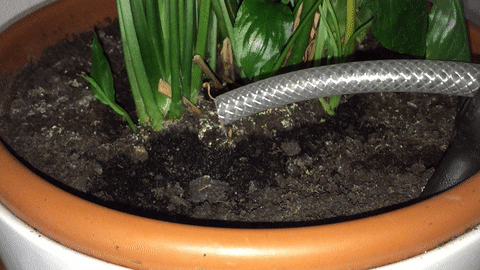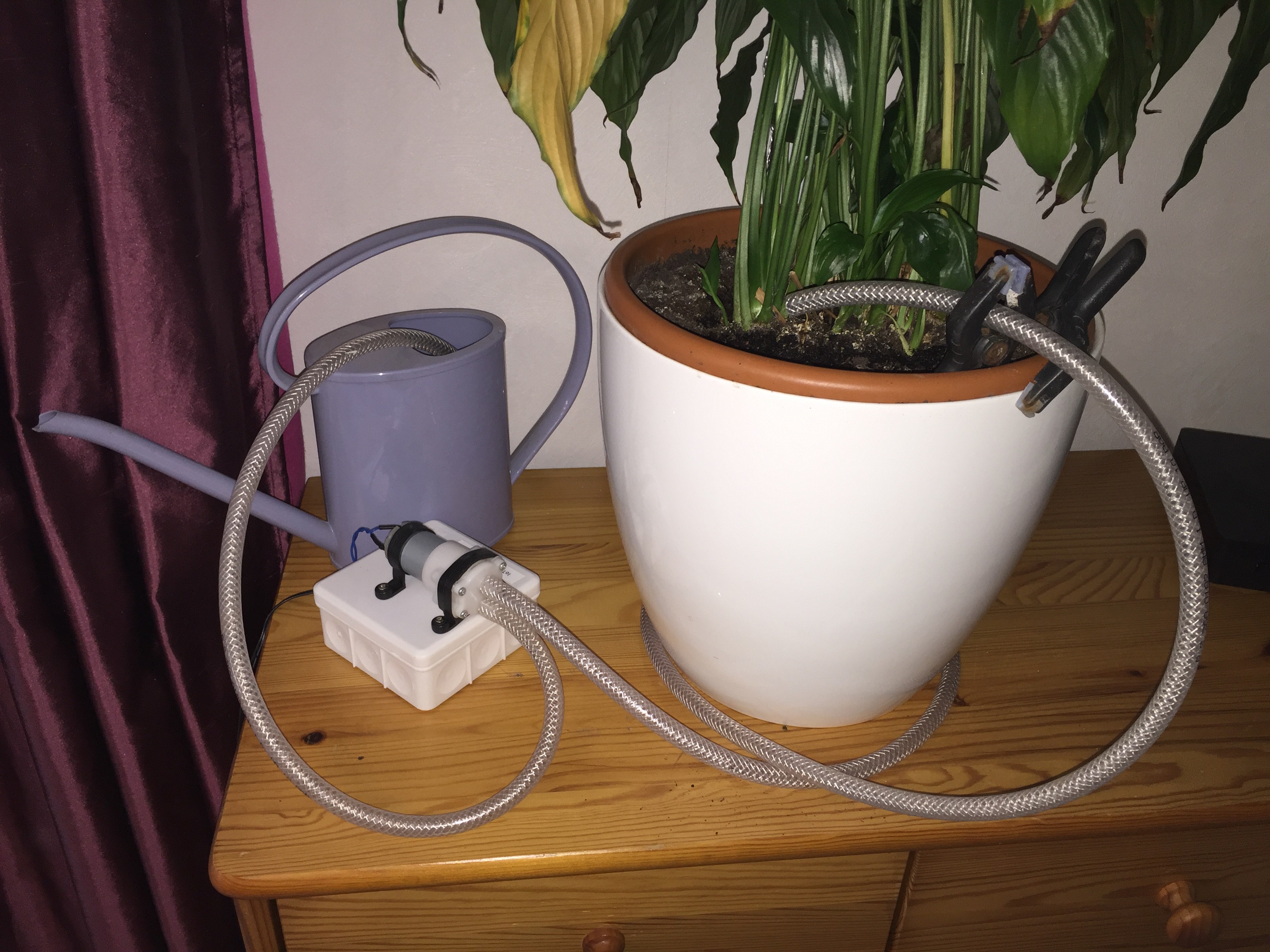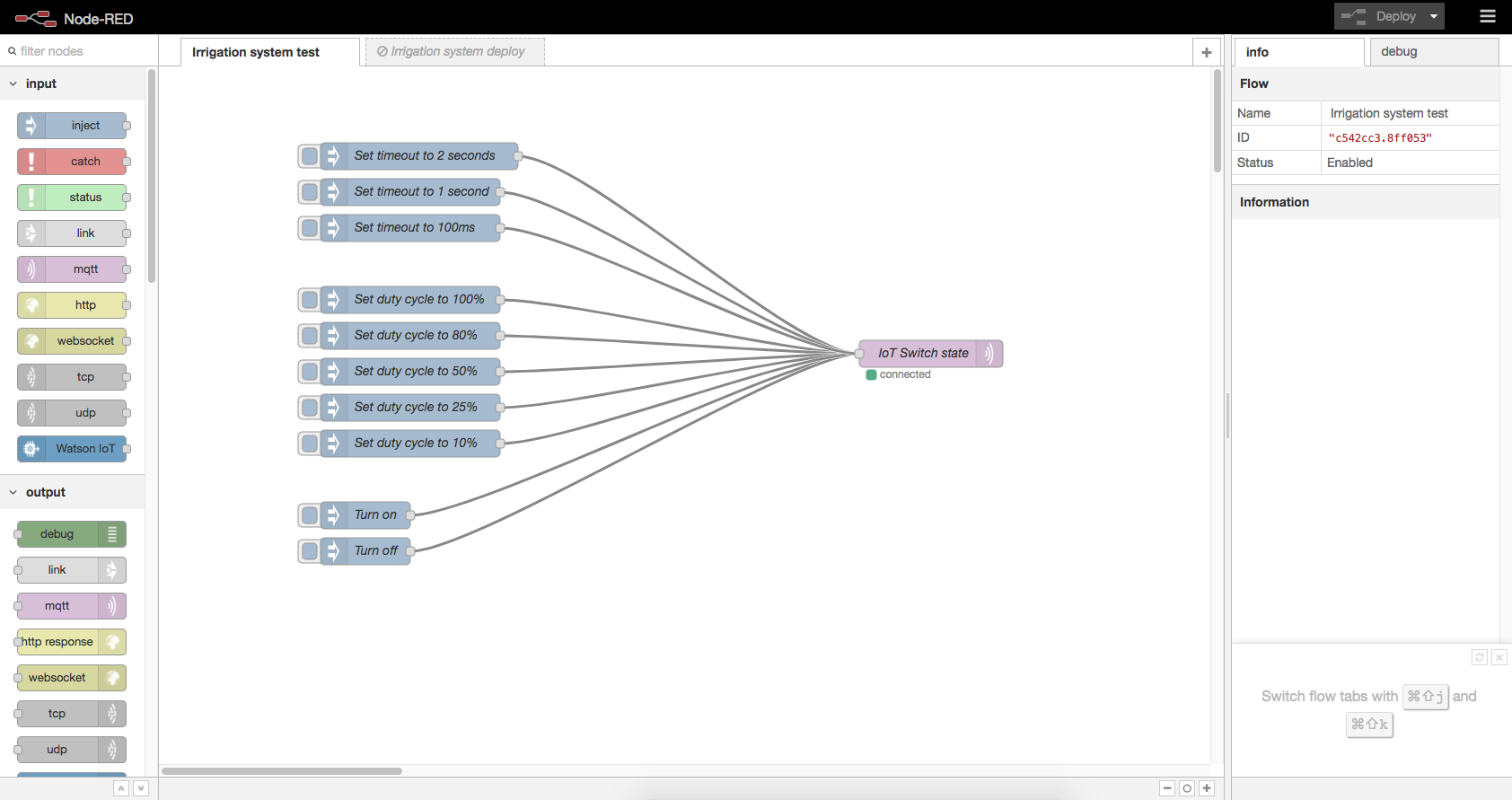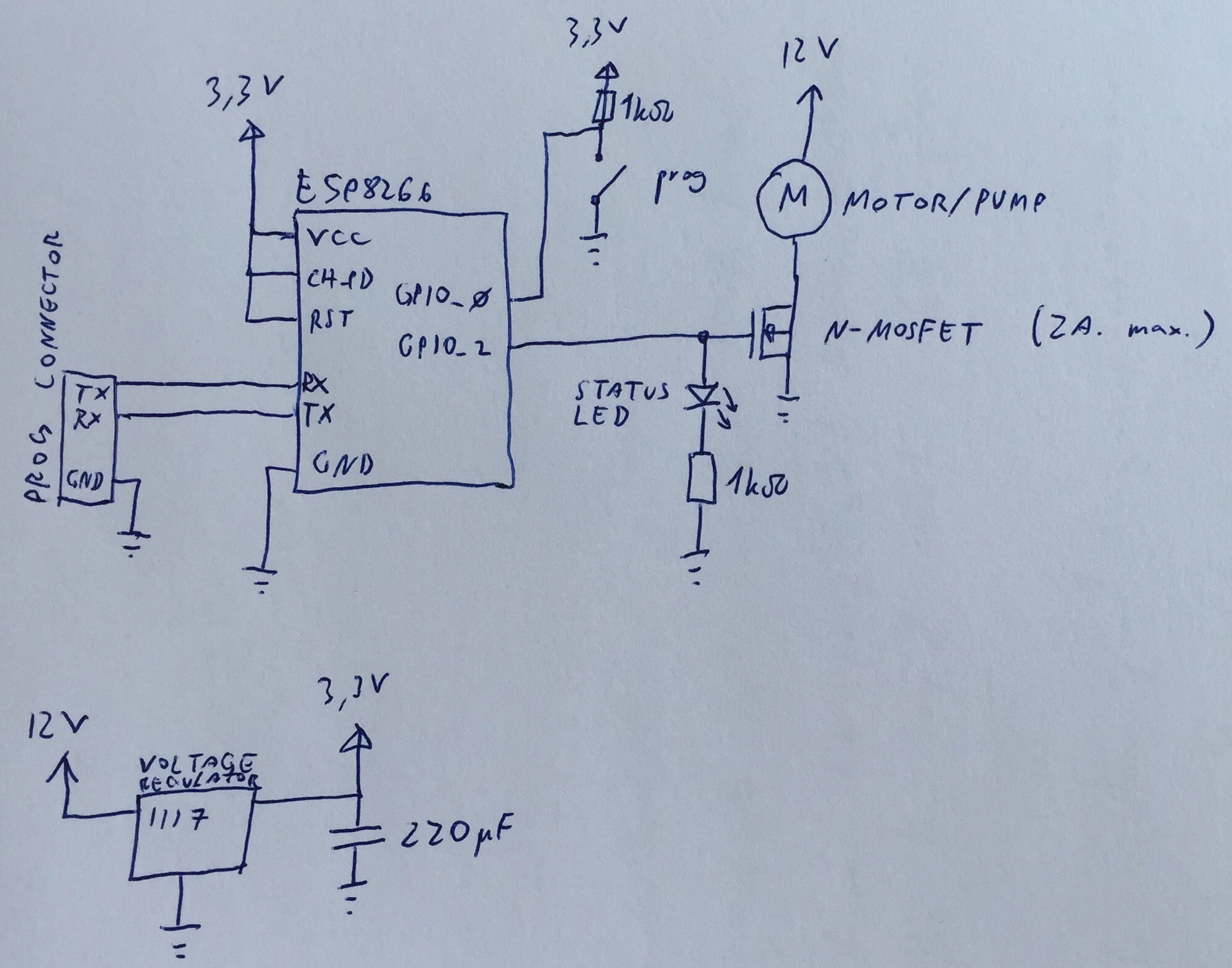-
Happy plants
09/30/2017 at 16:02 • 0 commentsI tested the system with a 9V, 1.6A supply I found. The pump is much quieter with water inside. While testing it with 12V, 1A supply I got voltage drops, enough to restart the ESP, so I would suggest 1.5 to 2A minimum.
![]()
No more tedious lifting of the watering can for me, or remembering to water the plants, or remembering I have plants. What is more soothing than listening to a robot take care of your plants anyway...
The system can be made small enough to be strategically hidden and the self-priming pump allows to have the water reserve anywhere. The pump will not pump the water backwards and holds it in the tube while not powered, so it only needs to be primed once.
I would like to have some more features, such as a water flow meter (in order to define the water quantity to be delivered instead of the pump timeout) and a reserve water level indicator (that could alert me in case water runs out), these will be integrated as I receive the parts from eBay.
-
N-MOSFET pull-down
09/03/2017 at 18:17 • 0 commentsThe thing about the ESP8266 is that it's so versatile and cheap that any excuse is good to make an IoT device out of anything. But its usage is not always straight forward. For example both of the ESP8266-01 usable outputs (GPIO0 and GPIO2) must be pulled high in order for it to start the program.
![]()
This is a problem as an N-MOSFET Gate pin needs to be at 0V for the transistor to be off, I want to add a pull-down resistor to make sure it's off when the module starts or crashes for some obscure reason, but this also affects the pin it is attached to.
On the ESP8266-01 module there are technically 4 usable pins: GPIO0 and 2 and the UART TX and RX (pins 1 and 3 respectively). The TX and RX pins are used to program the device, but they can technically be used as any other GPIO pin during runtime.
I tried to use the TX for the MOSFET signal as it's a low impedance anyway (output), but it turns out that the module doesn't like to have its TX signal pulled low during boot either (the program doesn't start properly). Thus my last chance was the RX pin, fortunately it didn't complain this time and that's what I ended up using.
-
Available products, preliminary requirements
09/03/2017 at 17:30 • 0 commentsBefore starting a project it's good to see what is commercially available, not because it might be cheaper and take less time to buy something similar, but because the project might be unfeasible because of some reason or somebody has already made a similar project with some software that can be recycled.
I found some ESP8266 modules strapped to relays on eBay, very nice modules for AC switching and I'll probably buy some later, but now I know that it has been done and is even commercially viable so how hard can it be to build such a device? I was also lucky enough to have just the right components in my electronics box.
From previous projects I've learned that it's time consuming and sometimes frustrating to program for the ESP8266. It's a great module, but if the inputs are not pulled to the right voltage, if the power supply is not smooth enough, or some other issue due to the fact that its software is still partly undocumented and hidden make it tedious sometimes. Thus I wanted to try out Node-Red, an online graphical programming tool for IoT devices.
![]()
The idea is to unload the high-level programming to a Node-Red server running on a local computer (Raspberry Pi in my case) and the only intelligence the switch must have is to react to turn-on and turn-off signals.
![]()
That was the initial plan, get the GPIO2 to toggle the N-MOSFET, throw in some code and the rest would happen on the Node-Red side on the Raspberry Pi.
The requirements were:
- 2A switching capability for the MOSFET
- 12V supply
- Linear 3.3V regulator, allowing for a large input range
- Status LED to show the state of the output without having to connect a load
IoT Household Plant Watering System
As I work the plants wither, possibly because of the solder fumes, but most probably because I keep forgetting to water them.




